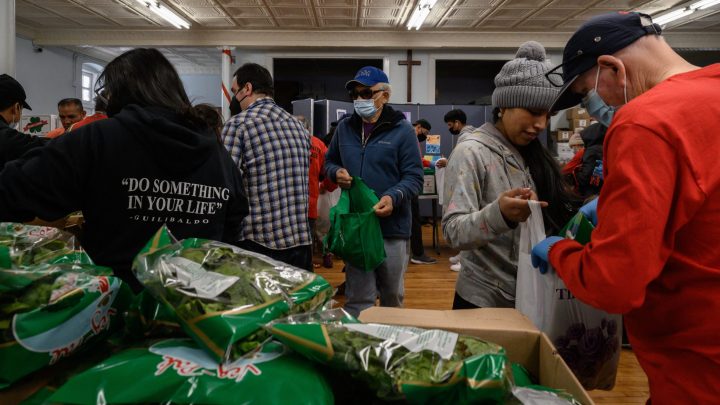
Census: Income fell, poverty increased in 2022

No matter how you slice new data released by the U.S. Census Bureau on Tuesday, real median income — the amount a household earns adjusted for inflation — fell last year. By one measure, it was down 2.3% last year. By another, it was down nearly 9%.
And poverty, by one measure, increased dramatically. While inflation played into that, it’s not even close to the whole story.
One way the Census Bureau measures how people are doing is by looking at the money they earn — their wages or salaries — relative to one another. That tells a story about the economy.
“It’s how much inequality the market is generating,” said Jennie Romich, professor at the University of Washington and director of the West Coast Poverty Center.
You can also measure how people are doing after taxes, after benefits and after assistance programs.
“The post-tax measure tells how much inequality people are experiencing,” Romich explained.
The government publishes both, and they tell very different stories for 2022. In terms of what people are earning in the economy before taxes and government benefits, median income fell 2.3%, inequality decreased for the first time since 2007, and the poverty rate didn’t really change.
But after taxes, after benefits and after government programs, real incomes fell almost 9%, inequality increased, and the poverty rate exploded from 7.8% to 12.4% — just shy of where it was in 2018.
“We saw big increases in poverty across every sociodemographic group,” said Luke Shaefer, a professor of public policy at the University of Michigan. “The biggest was among children. We saw child poverty more than double.”
Behind these numbers is the unwinding of pandemic-era government benefits. The child tax credit, an expanded earned income tax credit, economic impact payments — those all went away. Without them, post-tax real incomes fell 14% for the lowest earners, compared with a 7% decline for the highest earners.
“We can reduce inequality. We can reduce child poverty,” said Romich. “We briefly chose to, and then we reversed.”
The post-tax poverty rate for Black Americans went from north of 18% down to 11% during the pandemic, only to rebound to about 17%. If you don’t count the pandemic years, that’s the lowest on record — but almost 50% higher than the poverty rate for white Americans.
There’s a lot happening in the world. Through it all, Marketplace is here for you.
You rely on Marketplace to break down the world’s events and tell you how it affects you in a fact-based, approachable way. We rely on your financial support to keep making that possible.
Your donation today powers the independent journalism that you rely on. For just $5/month, you can help sustain Marketplace so we can keep reporting on the things that matter to you.

















